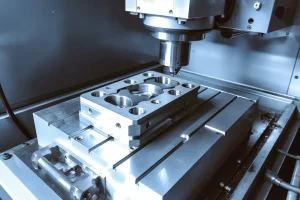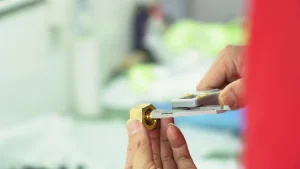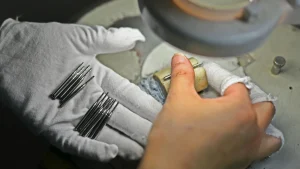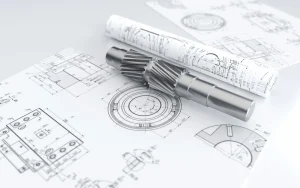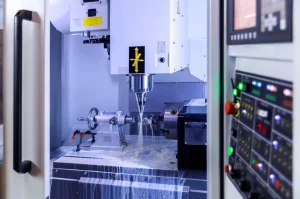In precision CNC machining, wear on the surface of parts is a common problem, which may be caused by a variety of factors, including tool wear, thermal deformation of machine tools, inaccurate machining parameter settings, etc. To address this problem, the following solutions can be adopted:
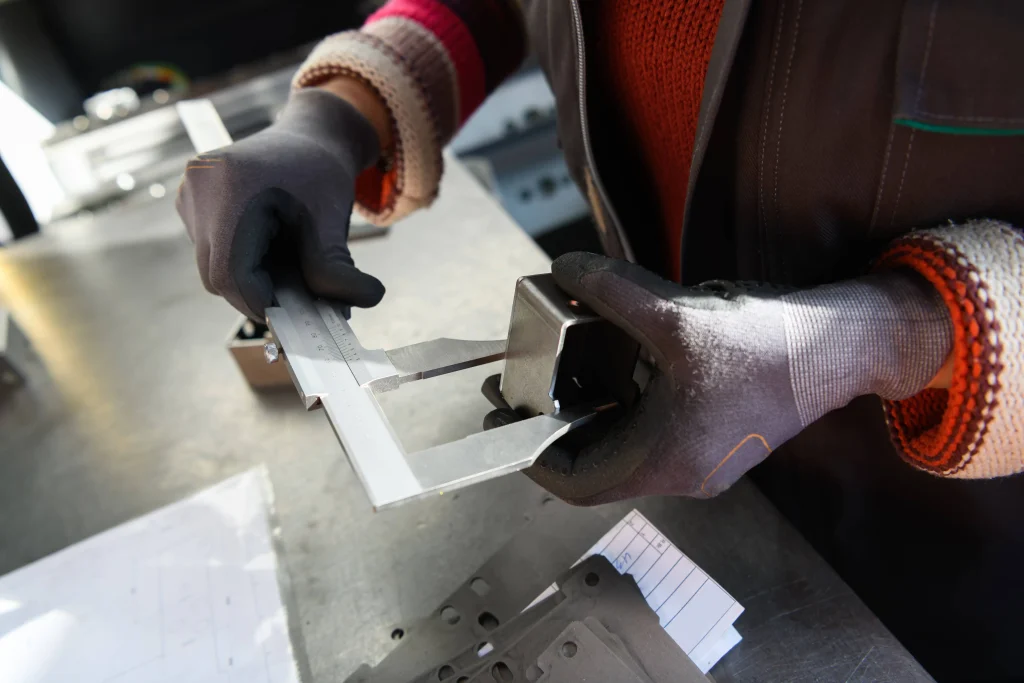
Check and replace tools
1. Check and replace tools regularly:
Tool wear in precision CNC machining is one of the main reasons for changes in cutting force, which in turn affects the dimensional accuracy and surface finish of the workpiece. Therefore, worn tools should be checked and replaced regularly to ensure that the tools remain in good cutting condition.
After the tool is worn, the edge should be ground or reground in time to restore its cutting effect and sharpness.
2. Use high-quality tools:
Choose high-quality tool materials, such as cemented carbide, ceramics or superhard materials, etc., to improve the wear resistance and service life of the tool.
Optimize processing parameters
1. Reasonably set processing parameters:
Precision CNC processing should reasonably set processing parameters such as feed speed, cutting depth, cutting speed, etc. according to material characteristics, tool type and processing requirements.
Carry out trial cutting tests and find the best processing conditions by adjusting parameters to ensure processing quality and efficiency.
2. Optimize cutting parameters:
Improper setting of cutting parameters will lead to poor surface finish. Cutting parameters should be optimized, such as reducing feed speed, adjusting speed appropriately, etc., to improve surface finish.
Control machine tool thermal deformation
1. Control machine tool temperature:
During operation, the machine tool may be affected by thermal expansion or thermal deformation, resulting in workpiece size deviation. Therefore, the temperature of the machine tool should be controlled and cooling measures should be taken, such as using coolant or adding a cooling system, to reduce the impact of thermal deformation.
2. Machine tool level adjustment:
Use a level to adjust the level of the machine tool, lay a solid foundation, fix the machine tool to improve its toughness, and reduce vibration and wear caused by unstable placement of the machine tool.
Improve workpiece clamping
1. Optimize workpiece clamping method:
Ensure that the clamping force of the workpiece in the fixture is evenly distributed to avoid workpiece deformation and dimensional deviation caused by uneven clamping force.
Regularly check the wear of the fixture and replace damaged fixture parts in time.
Strengthen maintenance and care
1. Machine tool maintenance:
Maintain and care the machine tool regularly, such as cleaning the guide rails, replacing worn bearings and balls, etc., to ensure the accuracy and stability of the machine tool.
2. Cutting fluid management:
Select cutting fluid suitable for processing materials and tools, and use and replace it correctly according to the requirements of the cutting fluid. Improper selection and use of cutting fluid may lead to poor cutting lubrication or poor cooling effect, which in turn affects the surface finish.
Adopt advanced technology and equipment
1. Introduce good technology:
Introduce good CNC processing technology and equipment, such as high-precision CNC machine tools, automated detection systems, etc., to improve processing accuracy and efficiency.
2. Implement intelligent monitoring:
Implement intelligent monitoring and data analysis during the processing process to detect and handle abnormal situations in a timely manner to ensure the stability and reliability of the processing process.

